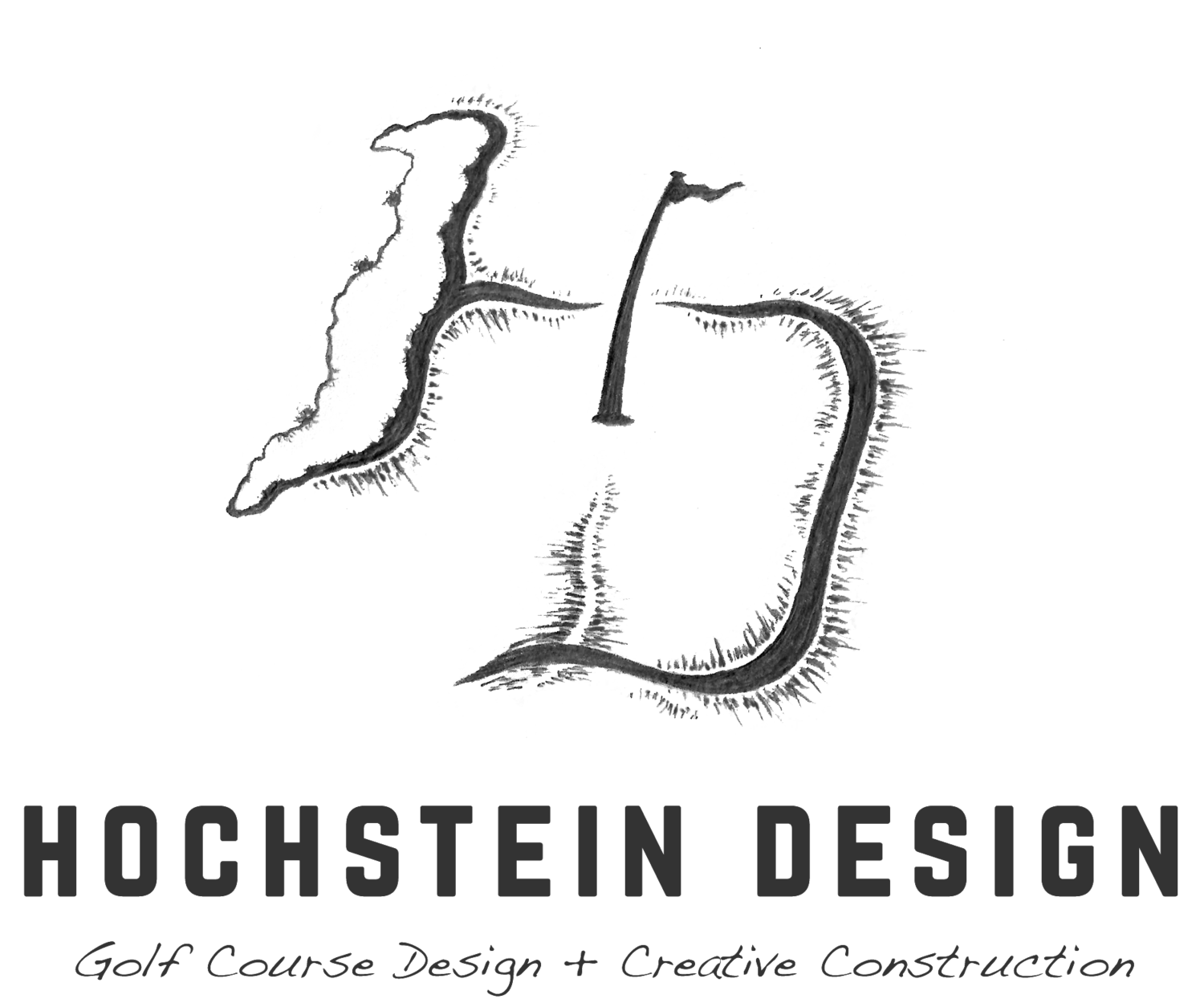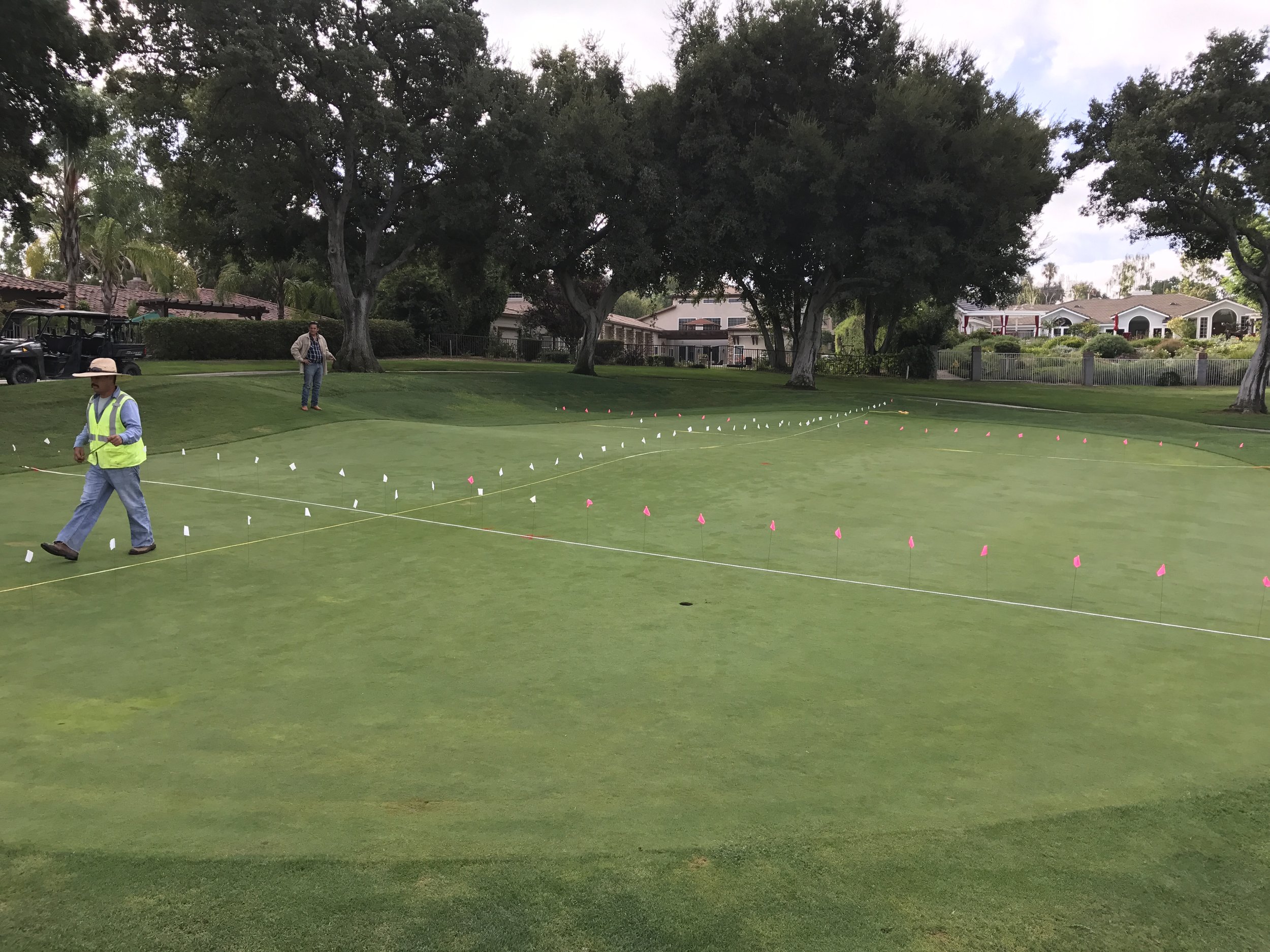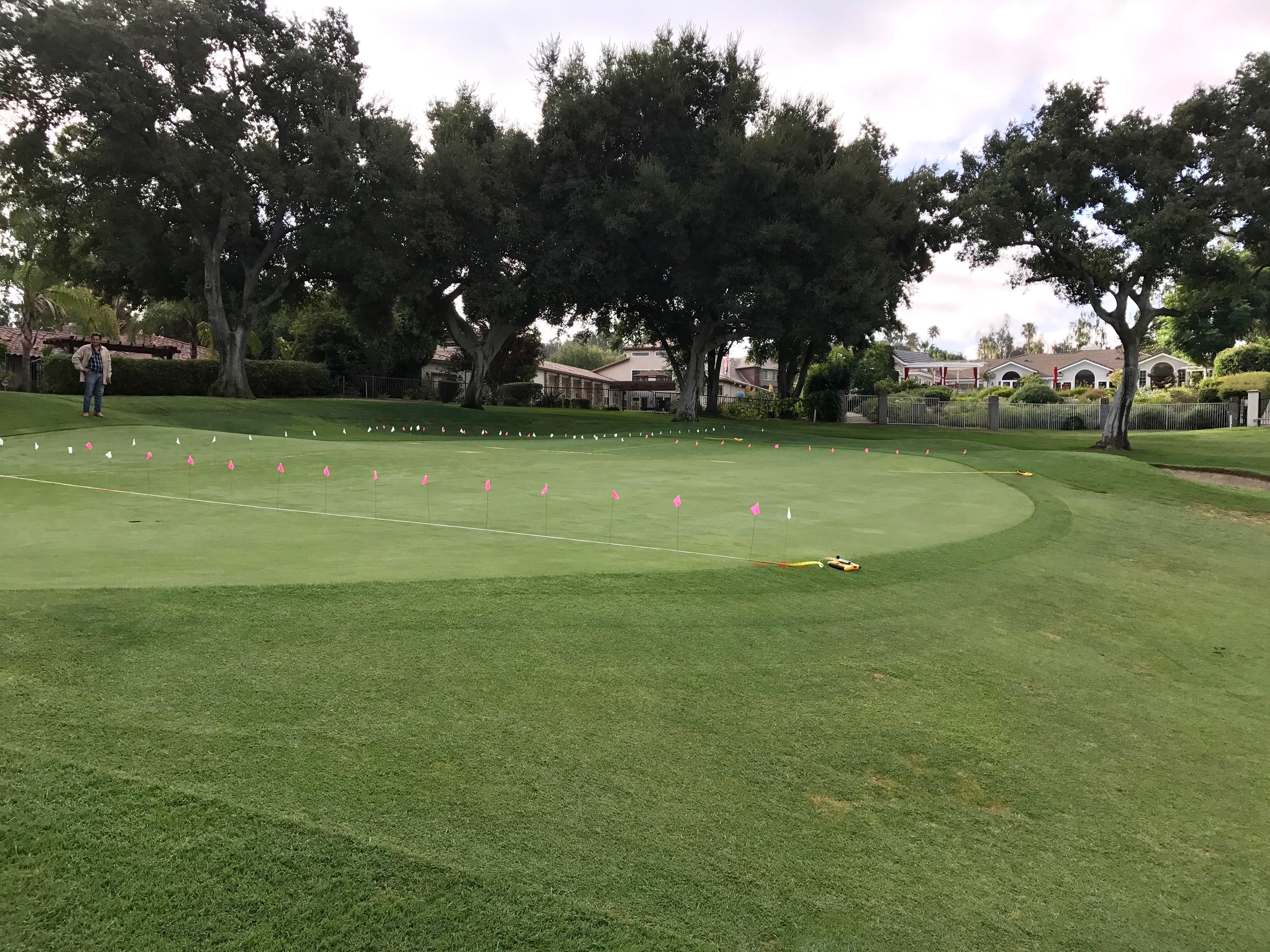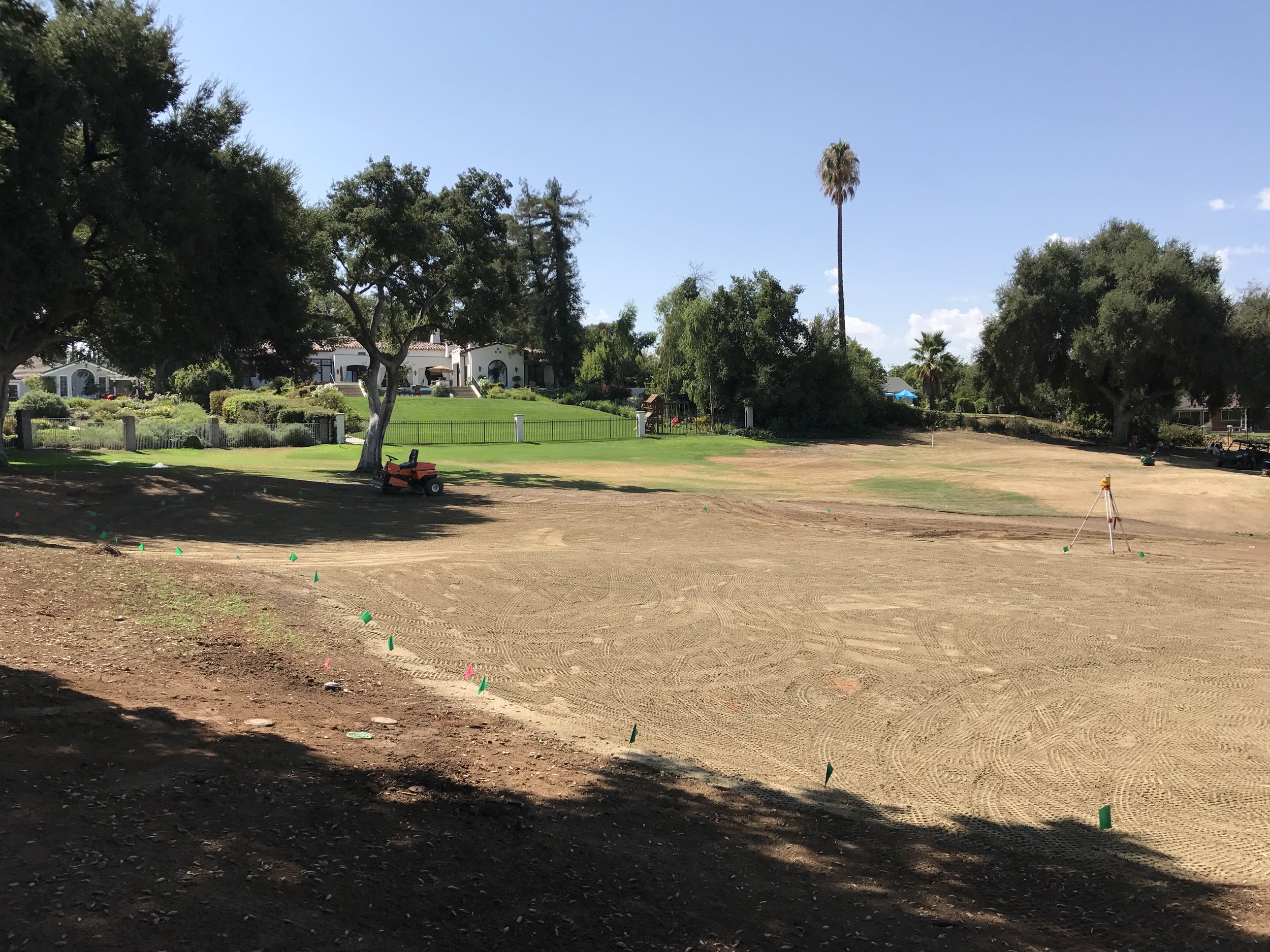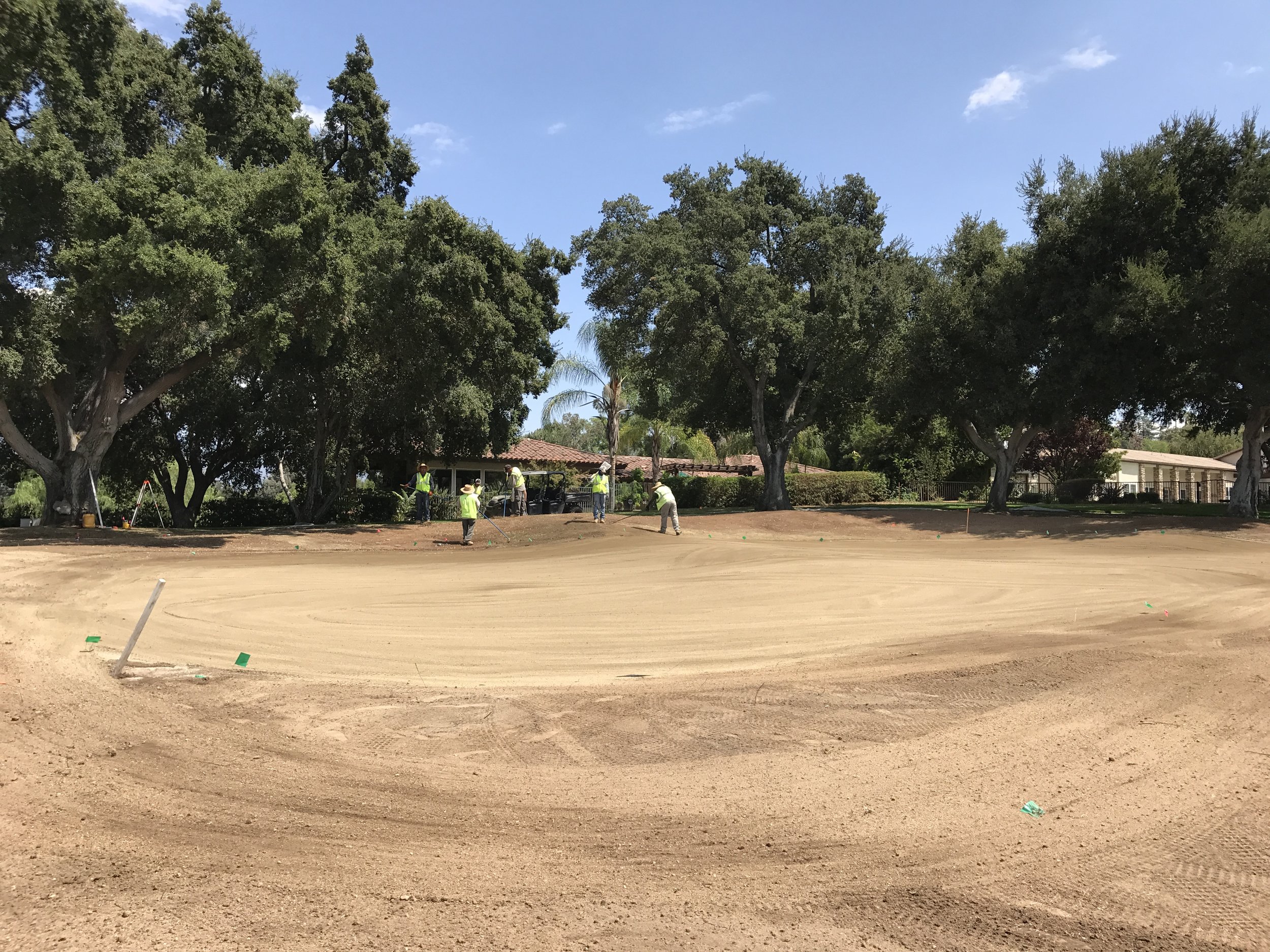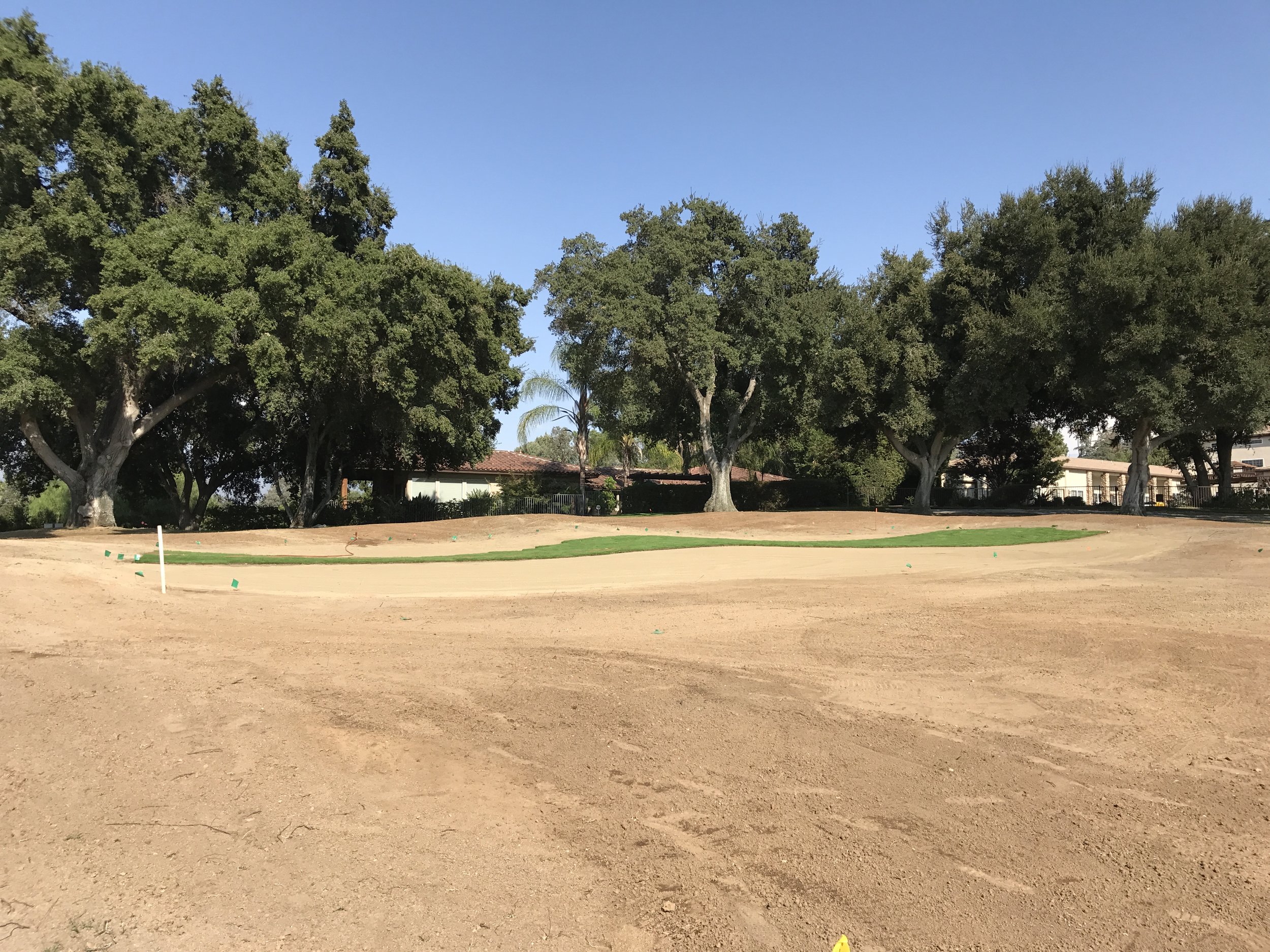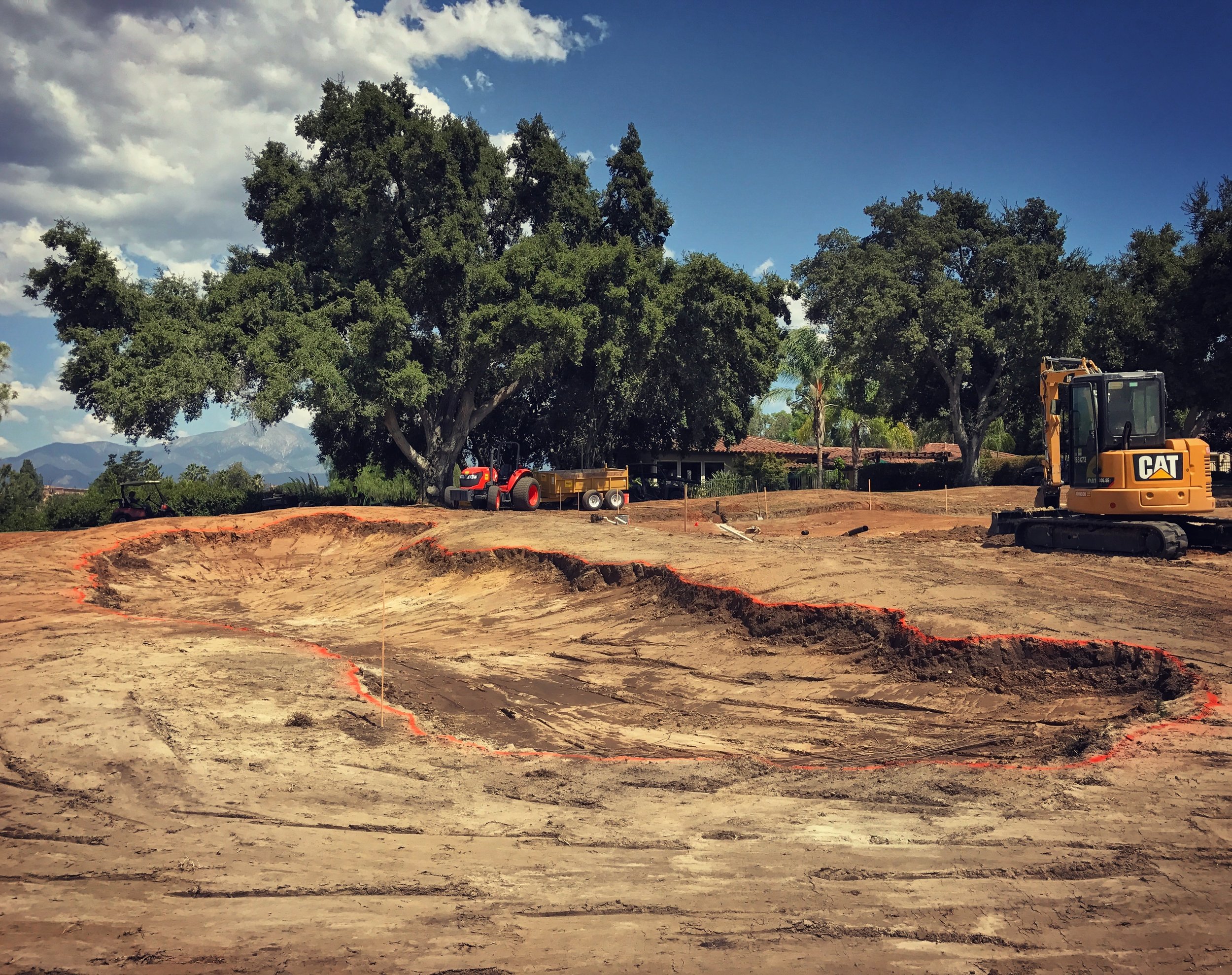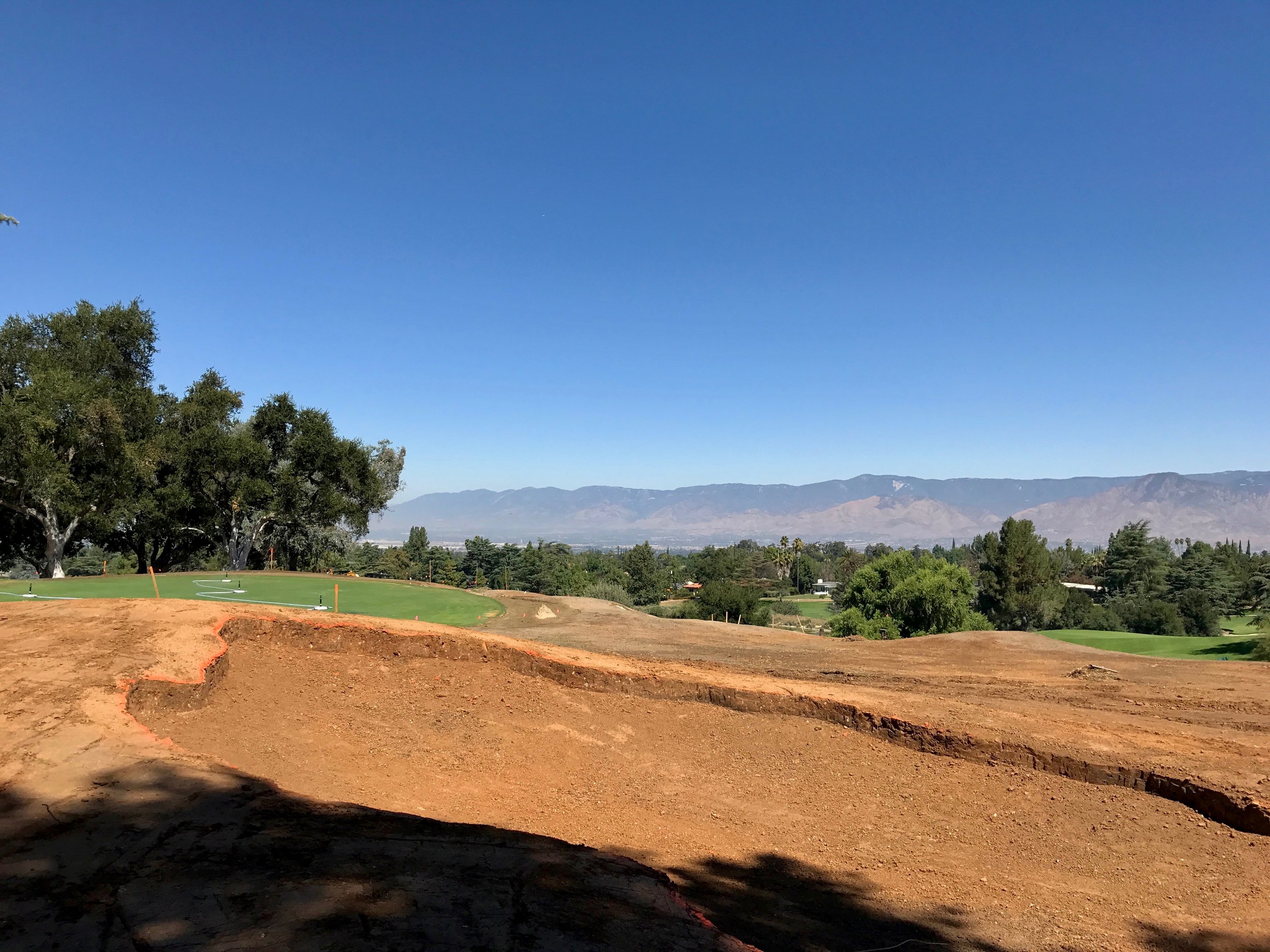Hole 3 at Redlands just after sand installation.
This year I am trying something new and breaking up this annual post into three parts. This first one will focus on the work that we did both out in the field and back in the office. The second part will be all about the complementary pieces that made the year what it was, from the culture of the places we visited to the music listened to while digging a bunker to other non-golf things that we find passion in. The third and final segment will be what may be most interesting to the bulk of you--the golf courses that we studied and played. So let's have some fun and get into it--here's part 1...
The Work
This was a bit of a different year for us at Hochstein Design. Instead of taking on a number of longer term projects helping out shaping, we spent more time working on potential leads to projects of our own, creating practice area schematic designs for a local course, and participating in some fun features on other great golf design sites like American Golfer, The Fried Egg, and Geeked on Golf. We also took our first ever trip to the Golf Industry Show in Orlando, which provided the opportunity to catch up with friends, meet new ones, and put faces to the social media name.
There were still a few fun things that we got to work on in the dirt though, including a spring trip to the Carolina mountains for Thad Layton and APDC, a week trying out artificial greens construction near Baltimore with Back Nine Greens, detailing bunkers and natural areas at Orinda, and return trips to both Redlands and Santa Ana for Todd Eckenrode and Jay Blasi, respectively. Here are some of my favorite things we got to work on, both out in the field and back in the office.
Favorite Features of the Field
We had the opportunity this summer to go back and touch up this natural area on the 15th at Orinda, which used to be an ivy-covered fence and jungle.
1. Hole 3 at Redlands It's hard to single out one feature here, as I loved working on every part of this reverse Redan-ish par 3. For one, I love working in a spot that has a beautiful view, and this one does, especially after tree removal restored those views. The hole itself is very cool as well. Based on an aerial that we had, architect Todd Eckenrode and I had the opportunity to restore the very large pair of angled MacKenzie bunkers that sit in ridge below and short of the green. Spoils from that operation and the new left bunker were used to increase the left to right tilt of the landing area as well as extend a helping/hurting ridge from that bunker to the green. If playing your shot on the ground, that contour will be a helping one. If flying it to the green and pulling it well left, it keeps you over that way. Green expansion has also added more holes closer to the rear MacKenzie mounds and the dangerous far right promontory. The hole has a decided angle to shape a shot now and should offer some very fun approach shots, especially for the short and medium-length hitters.
Click the images of hole 3 in construction in the gallery above to enlarge
2. Hole 2 at Redlands Again I am just going to lump together the entirety of the works on this hole. The green is a very cool but very steep MacKenzie green with a dividing hump up in the middle and strong back-right to front-left tilt. There were two small areas where they could place a pin, even in summertime when they roll much more slowly. While I am usually hesitant to tear into Golden Age greens to "soften" them, I was on board with Todd's plan to rebuild it with the same overall ideas but increase both the size and the pinnable areas.
Now, this is a process that is much more difficult compared to starting from scratch and building a new green. We had to strip the old top layer off while not disturbing too much of the original green. We then made our expansions and alterations carefully, checking grades and preserving general landforms along the way. The excess spoils went out to the front to make the transition smoother as well as the left to help build up the backside of the bunker. The overall result was successful in that the green still largely resembles its previous self while offering a whole lot more area where a hole can be placed, including one tucked behind the restored long skinny left greenside bunker. The green still has its "teeth" but is much more dynamic in how it plays.
A new approach bunker was also added 50 yards short and right and guards the ideal angle into a left hole location for people playing the long par 4 as a 3-shot hole. The right greenside bunker, which didn't seem to originally exist (hard to tell exactly on the aerial. It was very small if anything, which is unlike California MacKenzie) was also removed and replaced with contouring.
3. Extended bunker on 6 at Santa Ana Some key tree removal early this year opened up the left side of the very short par 4 6th at Santa Ana. Architect Jay Blasi's intent was always for a player to think about taking on the left fairway bunker and running one up onto the green. For someone who predominantly hits a fade though, this was very difficult with the trees. That corridor is much more open now though. In doing that, it visually and functionally made sense to extend the bunker left to accommodate the new open-ness. Everything feels a lot better to this hole now, and going for it is much more tempting.
4. Bunker and natural area touch-ups at Orinda The grassing process for the bunkers at Orinda involved rolling the fescue turf all the way over the edge to the floor. In doing this, there is usually some excess as well a little bit of loss for the detailing. Because we were spending a lot more time locally this year, there were some opportunities to go back into a few of the most overgrown bunkers at Orinda and detail the edges. This is hard physical work, but the instant gratification of a fresh new edge greatly outweighs a few blisters and sore muscles.
Above: Before and after touching up the right hand greenside bunker on the 14th at Orinda
5. Santa Ana Large Wash, Take II For various reasons, the drainage in the big restored sandy wash at Santa Ana did not work as well as hoped. A re-engineering project would solve that but also cause a lot of damage to almost everything in the interior. This operation was used as an opportunity to do a few things. One was extend the land bridge to give the shorter hitters a more feasible route to the second half of the par 5 15th hole. Another was to extend a different wash between 15 and 13 and create a new "don't go here" bunker for the long hitters bombing it to the second half of hole 15. Another opportunity yet was to improve the wash crossing path and get carts and players on 16 tee out of harm's way from trailing golfers on 15. The last and final opportunity was to improve the interior aesthetics of the wash itself, reshaping the islands and wash-ways to something with more 3-D definition and natural aesthetic. I've spent way more time in this area than I ever imagined, but I enjoyed the opportunity to work on mimicking a different type of landscape and enjoy the SoCal climate while doing so.
Favorite Features off the Field
1. American Golfer Interview Rob Thomas is a prolific golf blogger and has had a number of great design interviews on his site. I was very excited to be one of them early this year. I enjoyed tackling questions about negative design trends, approaches to design, dream sites, and growing the game, among others. Read the full interview at American Golfer.
2. Leven Hole writeup for Geeked on Golf After getting back from Scotland, Jason Way of Geeked on Golf asked if I would be interested in contributing to a post about Charles Blair MacDonald's "Leven" template, which, of course I was interested. My task would be for covering the "inspiration" side, which is the current 16th hole at Lundin Links in southern Fife. Jon Cavalier (@linksgems) and his amazing photos and travels would cover the Macdonald and Raynor templates. It was a fun exercise and turned out pretty well. Go ahead and read it here.
This diagram above was a part of my description for the original "Leven" hole in Jason Way's "My Favorite Template" piece on geekedongolf.com
3. Fried Egg Architecture Roundtable After reading these over the last year or so, it was exciting when Andy asked me to finally contribute. His questions were great, too, including thoughts on pro venues, rules, favorite holes, and what we wished the common golfer understood more about golf architecture. Check out the responses Parts 1 and 2 both here and here.
4. Fried Egg Podcast I had never done a podcast or live interview, but doing one with both Andy and Jay Blasi was a great way to get the feet wet. We discuss the "Dark Ages" of design as well as answer reader questions and participate in the infamous "overrated/underrated." Check it on The Fried Egg or iTunes (episode 56).
5. Design Opportunities They have come and gone in different forms, but the process has been great to build upon. Plus, we still have some potential opportunities in the works, which is very exciting.
Best Experiences
1. The smoggy haze clearing one Saturday while working on the 3rd at Redlands, which sits high on a ridge with a beautiful view across to the San Bernardino Mountains. After a week or so of thick haze, all the details were visible this day, and somehow my music sounded better.
The haze cleared, and all felt good...as long as I kept the door shut and the AC going. The clear air also brought 100+ degree temperatures
2. Evenings with open windows at Redlands, pick one.
3. Working in the peaceful mountain valley at Balsam Mountain with warm spring weather and the trees just starting to bud and flower.
Mornings at Balsam Mountain were pleasant indeed.
4. Pleasant December weather in The O.C. working at Santa Ana.
5. Finishing early enough on my last day at Santa Ana to catch the very last rays of the day on Huntington Beach
Accolades (!?)
Surprised and flattered to see the last name on there
I had the surprising distinction of being named one of Matt Ginella's (Golf Channel's Architecture Correspondent) "Top Architects Under 40." I didn't realize it until getting a few texts and seeing others post it on instagram and twitter. It is very flattering and exciting to be mentioned among such talent, and I full-heartedly believe that we can do top quality work that can compare with some of the best. However, I have to take this time to acknowledge all those architects who I have worked with and learned from. Tom Doak, Todd Eckenrode, Jay Blasi, Frank Pont, Patrice Boissonnas, Mike McCartin, Forrest Richardson, and Mike DeVries have all been great in opportunities to contribute to their work as well as teach me about the business.
I'd also like to shout out and acknowledge all the other talented young people who could have just as easily been on that list. It doesn't feel fair to name them, but there is a large crew of talented and motivated young designers and shapers out there that are doing very good work. I fully believe we are stronger together than individually, and I wish everyone success both now and in the future.
Hole 3 approach at Redlands after grassing and sand
